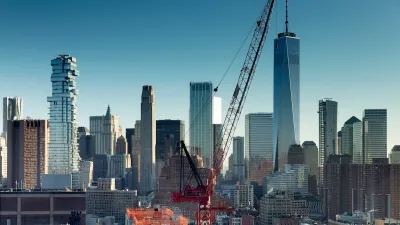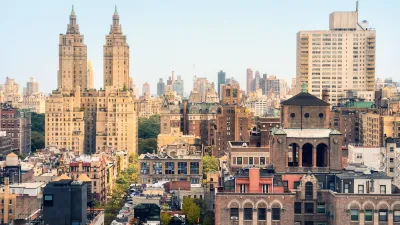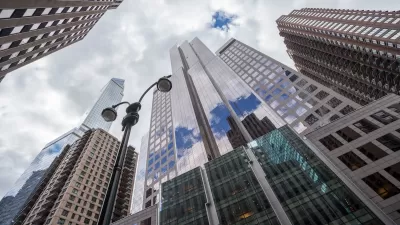While the rezoning of neighborhoods like West Chelsea garnered plenty of attention, less analysis has been devoted to the impacts of zoning changes enacted by the Bloomberg Administration in places like Ozone Park.
Sarah Laskow starts her examination of the Bloomberg’s many downzoning efforts with the 530 blocks in Ozone Park, at the end of the A-train, which was the “second-largest rezoning in the entire twelve years of the Bloomberg administration.” The Ozone Park rezoning, according to Laskow, was “more about determining what won’t be built than what will.”
“One of the main goals of this change, common in Bloomberg-era rezonings, was to ‘reinforce neighborhood character.’ That sounds innocent enough, but it generally meant limiting new construction and codifying the status-quo of the neighborhood—giving the people who already lived there power to keep these places from changing.”
In fact, says Laskow, instead of providing a building envelope that will allow the city to grow into it, “The Bloomberg administration has left behind a building envelope that’s more like a corset, pulled tight to the city’s body, cinching around places that were already small and boosting its curves.”
And for all the attention devoted to new high rises allowed by rezoning in other parts of the city, “The Bloomberg administration’s 120 rezonings did as much to change the city’s shape in places where it limited growth as where it let developers build tall, and, as the city expands, those limits could become a problem.”
FULL STORY: The quiet, massive rezoning of New York

Trump Administration Could Effectively End Housing Voucher Program
Federal officials are eyeing major cuts to the Section 8 program that helps millions of low-income households pay rent.

Planetizen Federal Action Tracker
A weekly monitor of how Trump’s orders and actions are impacting planners and planning in America.

Ken Jennings Launches Transit Web Series
The Jeopardy champ wants you to ride public transit.

California Invests Additional $5M in Electric School Buses
The state wants to electrify all of its school bus fleets by 2035.

Austin Launches $2M Homelessness Prevention Fund
A new grant program from the city’s Homeless Strategy Office will fund rental assistance and supportive services.

Alabama School Forestry Initiative Brings Trees to Schoolyards
Trees can improve physical and mental health for students and commnity members.
Urban Design for Planners 1: Software Tools
This six-course series explores essential urban design concepts using open source software and equips planners with the tools they need to participate fully in the urban design process.
Planning for Universal Design
Learn the tools for implementing Universal Design in planning regulations.
Ada County Highway District
Clanton & Associates, Inc.
Jessamine County Fiscal Court
Institute for Housing and Urban Development Studies (IHS)
City of Grandview
Harvard GSD Executive Education
Toledo-Lucas County Plan Commissions
Salt Lake City
NYU Wagner Graduate School of Public Service





























